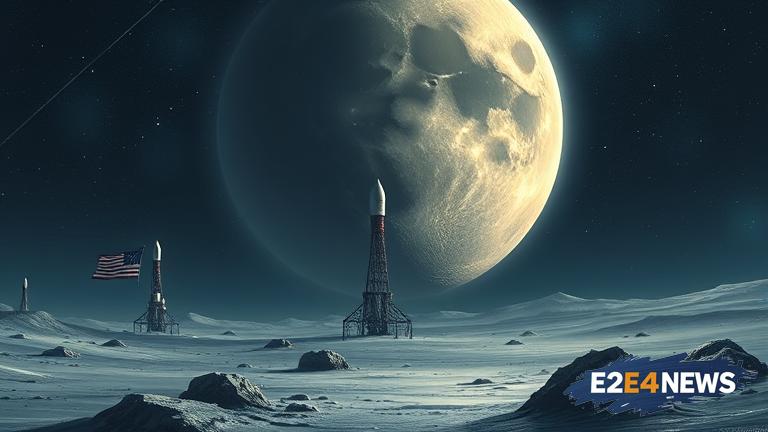NASA’s Artemis program is a groundbreaking mission that aims to return humans to the lunar surface by 2025. The program is a significant step towards establishing a sustainable presence on the Moon and eventually sending humans to Mars. One of the primary objectives of the Artemis mission is to search for lunar ice, which is believed to be present in the permanently shadowed craters near the Moon’s poles. The discovery of lunar ice would be a major breakthrough, as it could provide a source of water, air, and fuel for future missions. The Artemis program will also focus on exploring the lunar surface for other resources, such as helium-3, a rare isotope that could be used as fuel for nuclear fusion. The mission will involve sending a series of spacecraft to the Moon, including the Space Launch System (SLS) rocket and the Orion spacecraft. The SLS rocket will be the most powerful rocket ever built, capable of carrying heavy payloads to the Moon and beyond. The Orion spacecraft, on the other hand, will be designed to carry astronauts to the Moon and provide them with a safe and comfortable environment during their mission. The Artemis program will also involve the development of new technologies, such as advanced life support systems and radiation protection. The mission will be a major step towards establishing a sustainable human presence on the Moon, which could eventually lead to the establishment of a lunar base. The lunar base could serve as a hub for scientific research, exploration, and development, and could also provide a stepping stone for missions to Mars and beyond. The Artemis program is a collaboration between NASA and several private companies, including SpaceX and Blue Origin. The program is expected to create new opportunities for scientific research, technological innovation, and economic development. The discovery of lunar ice and other resources could also have significant implications for the future of space exploration and development. The Artemis mission is a major milestone in the history of space exploration, and its success could pave the way for a new era of space travel and discovery. The mission will also provide valuable insights into the Moon’s geology, composition, and atmosphere, which could help scientists to better understand the Moon’s origin and evolution. Furthermore, the Artemis program will also involve the development of new strategies for lunar exploration, including the use of robotic missions and in-situ resource utilization. The program will also provide opportunities for international cooperation and collaboration, which could help to advance the field of space exploration and development. Overall, the Artemis mission is a significant step towards establishing a sustainable human presence on the Moon and beyond, and its success could have far-reaching implications for the future of space exploration and development.
